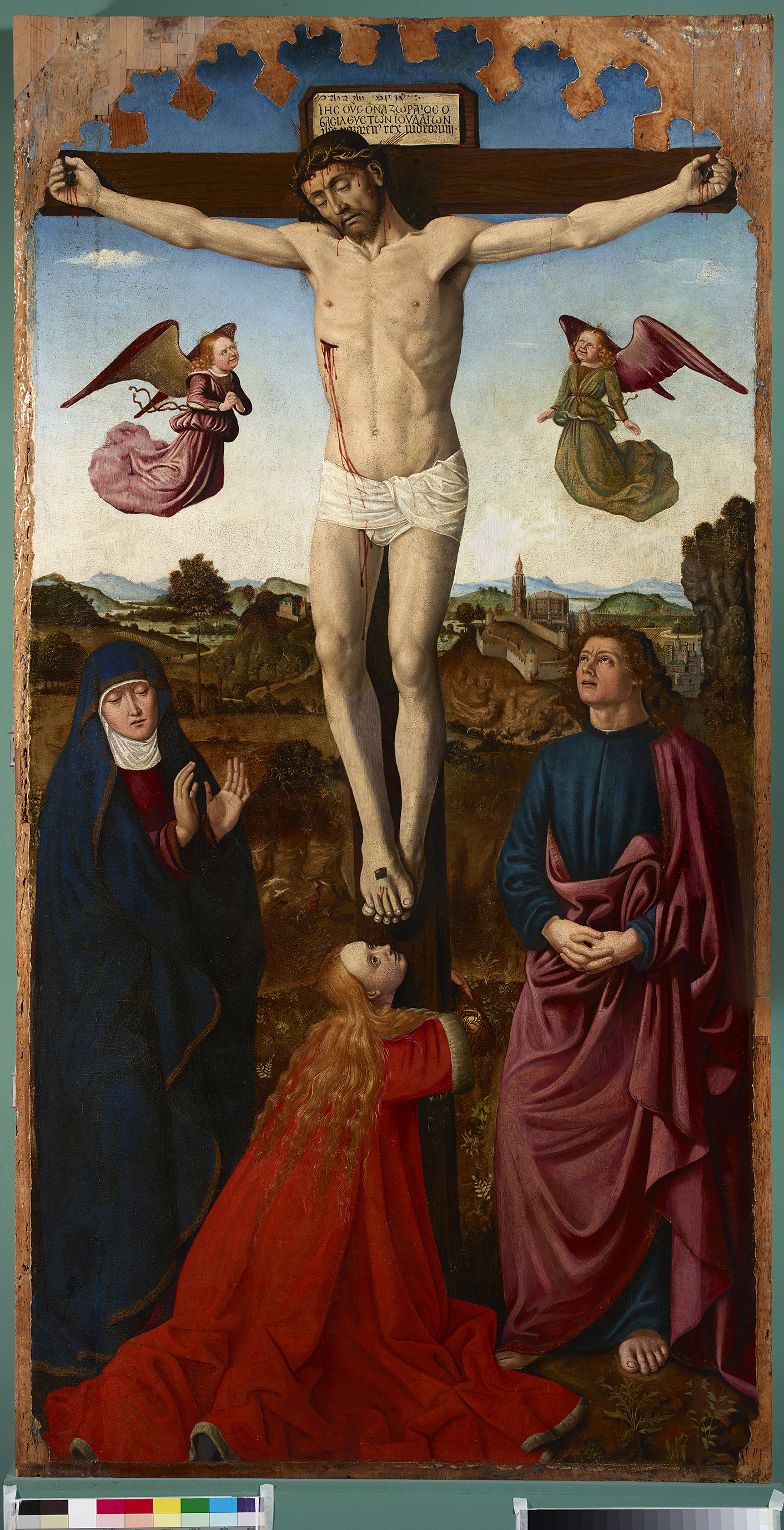
Click here to view image
Crucifixion with the Madonna, Mary Magdalene and St John the Evangelist
- deposito
Brea, Ludovico
painting
PB 311
Unità di misura: cm; Altezza: 213; Larghezza: 134
olio su tavola di pioppo
ESPOSIZIONE ARTISTICO ARCHEOLOGICO INDUSTRIALE APERTA NELLE SALE DELL'ACCACEMIA LIGUSTICA - GENOVA - 1868<br>MOSTRA D'ARTE ANTICA APERTA NELLE SALE DEL PALAZZO BIANCO DESTINATO A SEDE DEL NUOVO MUSEO CIVICO - GENOVA - 1892<br>LES BREA, PEINTRES NICOIS DES XV ET XVI SIECLE - NICE - 1937<br>MOSTRA DEI PRIMITIVI MEDITERRANEI - BORDEAUX/ GENOVA/ BARCELLONA - 1952<br>IL DIPINTO E IL SUO ROVESCIO. PROPOSTA DI LETTURA PER DIPINTI A SUPPORTO LIGNEO DELLA GALLERIA DI PALAZZO BIANCO - GENOVA - 1991
Tradition has it that the polyptych was made by Ludovico Brea for Biagio De' Gradi in 1481, the year of his will (Soprani 1674, p. 13; Ratti-Soprani 1768, v. L, p. 22; Alizeri 1873, v. LI, pp. 291-295). While accepting the attribution, scholars consider the crucifixion to be about a decade later. According to the will, Biagio De' Gradi's heirs were to complete and decorate the chapel (De Floriani 1990, p. 39; De Floriani 1991, p. 410; Schwok 2005, pp. 150-151). This hypothesis is also confirmed from a stylistic-formal point of view with regard to the breadth of the landscape, the attention paid to the play of light and shadow and the balance of the composition given by the space-figure relationship (De Floriani 1991, p. 410). The two panels depicting, respectively, St. Nicholas of Tolentino and St. Vincent Ferrer with donor (Prague, Narodni Galerie; cf. Pujmanova 1987, pp. 84-87; Pujmanova 197, p. 20; De Floriani 1991, p. 410; Tagliaferro 1991, p. 54) and the panel with St. Peter (card 147), are considered to belong to the crucifixion polyptych. In the foreground Jesus, wearing a white loincloth, a crown of thorns on his head and a wound on his bleeding side, is crucified to a smooth cross, on the top of which a scroll reads: “Jesus Nazarene King of the Jews” in Hebrew, Greek and Latin. On either side of the cross two little angels are suspended in flight. At the foot of the cross, Mary Magdalene, with long blond hair flowing down her shoulders, wears a gold brocade dress with a red cloak edged with ermine. On the right, St. John the Evangelist, with folded hands, dressed in blue and wearing a purple cloak, looks towards Jesus. On the opposite side, the Madonna is depicted in a red dress and a blue cloak, edged in gold, covering her head wrapped in a white veil. In the background, a hilly landscape with a river and fortified villages is painted.



